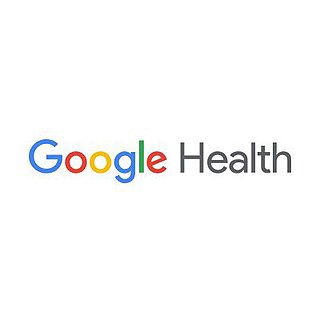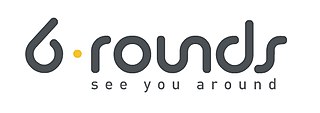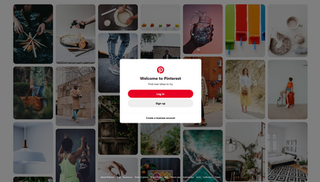
LinkedIn is a business and employment-focused social media platform that works through websites and mobile apps. It was launched on May 5, 2003. It is now owned by Microsoft. The platform is primarily used for professional networking and career development, and allows jobseekers to post their CVs and employers to post jobs. From 2015 most of the company's revenue came from selling access to information about its members to recruiters and sales professionals. Since December 2016, it has been a wholly owned subsidiary of Microsoft. As of March 2023, LinkedIn has more than 900 million registered members from over 200 countries and territories.

Google Maps is a web mapping platform and consumer application offered by Google. It offers satellite imagery, aerial photography, street maps, 360° interactive panoramic views of streets, real-time traffic conditions, and route planning for traveling by foot, car, bike, air and public transportation. As of 2020, Google Maps was being used by over one billion people every month around the world.

Google Analytics is a web analytics service offered by Google that tracks and reports website traffic and also the mobile app traffic & events, currently as a platform inside the Google Marketing Platform brand. Google launched the service in November 2005 after acquiring Urchin.

Google Health was a project by Google designed as an attempt to create a repository of health records and data in order to connect doctors, hospitals and pharmacies directly. The project was introduced in 2008 and discontinued in 2012. Google Health was restarted in 2018 but appeared to be discontinued in 2021 and was officially called an "effort" rather than a separate division as of 2022.
Google Workspace is a collection of cloud computing, productivity and collaboration tools, software and products developed and marketed by Google. It consists of Gmail, Contacts, Calendar, Meet and Chat for communication; Currents for employee engagement; Drive for storage; and the Google Docs Editors suite for content creation. An Admin Panel is provided for managing users and services. Depending on edition Google Workspace may also include the digital interactive whiteboard Jamboard and an option to purchase add-ons such as the telephony service Voice. The education edition adds a learning platform Google Classroom and today has the name Workspace for Education.
The Facebook Platform is the set of services, tools, and products provided by the social networking service Facebook for third-party developers to create their own applications and services that access data in Facebook.

Wix.com Ltd. is an Israeli software company, publicly listed in the US, that provides cloud-based web development services. It allows users to create HTML5 websites and mobile sites through the use of online drag and drop tools. Along with its headquarters and other offices in Israel, Wix also has offices in Brazil, Canada, Germany, India, Ireland, Japan, Lithuania, Poland, the Netherlands, the United States, Ukraine, and Singapore.

Malwarebytes Inc. is an American Internet security company that specializes in protecting home computers, smartphones, and companies from malware and other threats. It has offices in Santa Clara, California; Clearwater, Florida; Tallinn, Estonia; Bastia Umbra, Italy; and Cork, Ireland.

Foursquare City Guide, commonly known as Foursquare, is a local search-and-discovery mobile app developed by Foursquare Labs Inc. The app provides personalized recommendations of places to go near a user's current location based on users' previous browsing history and check-in history.

Rounds is a video-enabled real-time social network with collaborative browsing, chat, multi-player gaming and built-in social recommendation features that can be expanded through an open API. Rounds was founded by Israeli entrepreneurs Dany Fishel, Ilan Leibovich and Dimitry Shestek in February 2008. Fishel is Rounds' CEO and Ilan Leibovich is the company COO. The company is based in Tel Aviv, Israel.

Path was a social networking-enabled photo sharing and messaging service for mobile devices that was launched on 14 November 2010. The service allows users to share up to a total of 50 contacts with their close friends and family. Based in San Francisco, California, the company was founded by Shawn Fanning and former Facebook executive Dave Morin.

Google+ is a defunct social network that was owned and operated by Google until 2019. The network was launched on June 28, 2011, in an attempt to challenge other social networks, linking other Google products like Google Drive, Blogger and YouTube. The service, Google's fourth foray into social networking, experienced strong growth in its initial years, although usage statistics varied, depending on how the service was defined. Three Google executives oversaw the service, which underwent substantial changes that led to a redesign in November 2015.

Pinterest is an American image sharing and social media service designed to enable saving and discovery of information on the internet using images and, on a smaller scale, animated GIFs and videos, in the form of pinboards. The site was created by Ben Silbermann, Paul Sciarra, and Evan Sharp; it had 463 million global monthly active users as of April 2023. It is operated by Pinterest, Inc., based in San Francisco.

Line is a freeware app for instant communications on electronic devices such as smartphones, tablet computers and personal computers. Line users exchange: texts, images, video and audio and conduct free VoIP conversations and video conferences. In addition, Line is a platform providing various services including: digital wallet as Line Pay, news stream as LINE Today, video on demand as Line TV and digital comic distribution as Line Manga and Line Webtoon. The service is operated by Line Corporation, a Tokyo-based subsidiary of Z Holdings.
140 Proof is an advertising company that uses social data from many sources in targeting relevant ads based on consumers' interests as indicated by their social activity across networks.

Appcelerator is a privately held mobile technology company based in San Jose, California. Its main products are Titanium, an open-source software development kit for cross-platform mobile development, and the Appcelerator Platform.
Firebase is a set of backend cloud computing services and application development platforms provided by Google. It hosts databases, services, authentication, and integration for a variety of applications, including Android, iOS, JavaScript, Node.js, Java, Unity, PHP, and C++.
Onavo was an Israeli mobile web analytics company owned by Meta Platforms. The company primarily performed its activities via consumer mobile apps, including the virtual private network (VPN) service Onavo Protect, which analysed web traffic sent through the VPN to provide statistics on the usage of other apps.
OneSpan is a publicly traded cybersecurity technology company based in Chicago, Illinois, with offices in Montreal, Brussels and Zurich. The company offers a cloud-based and open-architected anti-fraud platform and is historically known for its multi-factor authentication and electronic signature software.













